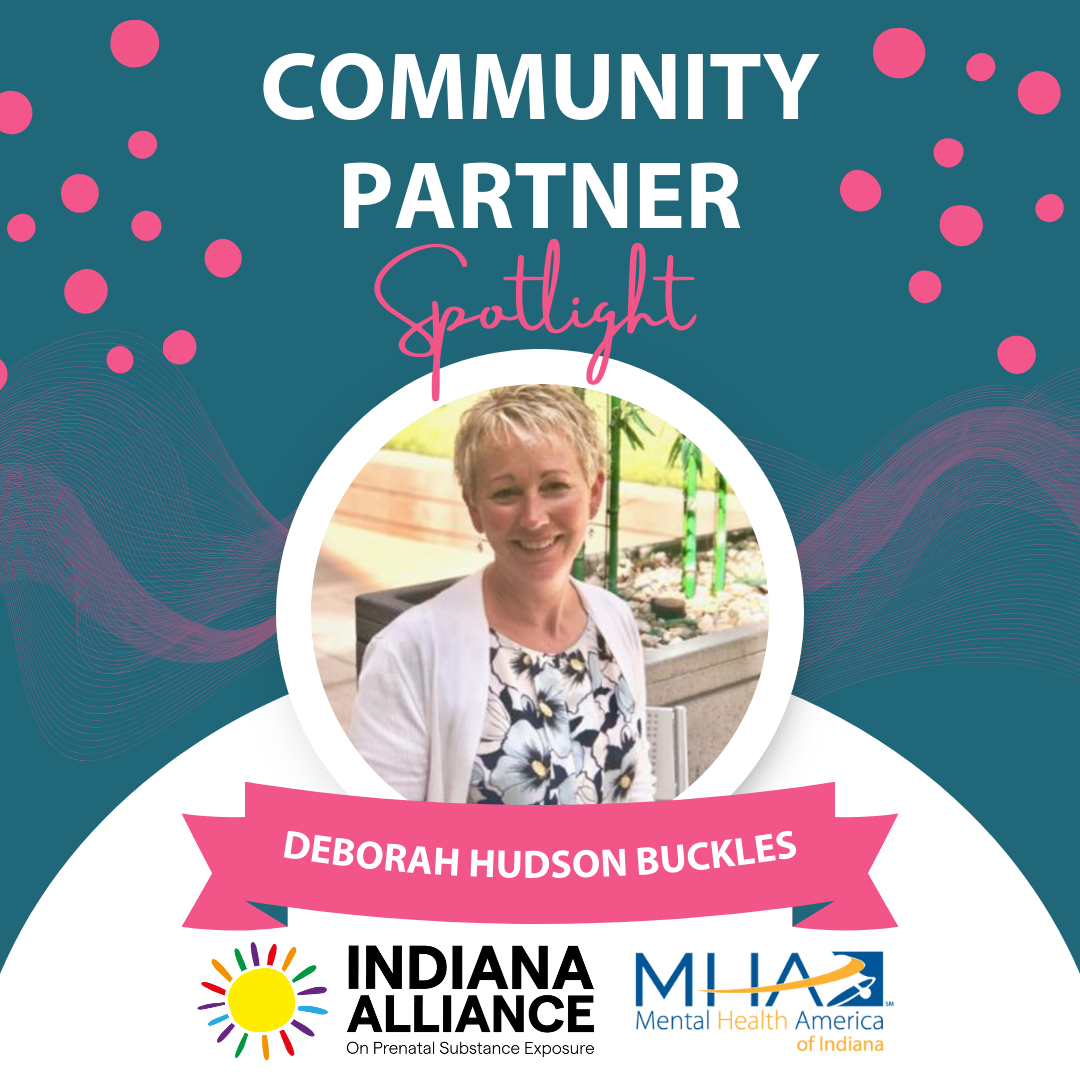When we get pregnant, we’re routinely told to skip alcohol so our kids aren’t born with fetal alcohol syndrome, and to stop smoking to reduce the risk of miscarriage, stillbirth, or Sudden Infant Death Syndrome.
But give up nail polish? Nix air freshener? Forego plastic water bottles? The chemicals in these everyday products can be just as toxic to our developing babies as cigarettes or booze, research from the nonprofit Environmental Working Group (EWG) shows. That’s because the chemicals a pregnant woman is exposed to get into her blood stream and can pass right through the placenta to the developing fetus. Such fetal exposure to toxins during critical stages of development can cause permanent and irreversible brain and organ damage, not just at birth but even decades later.
EWG’s research identified 232 industrial compounds and pollutants babies could be born with. Some of these are so prevalent in our soil or water they can be almost impossible to avoid. But others—especially those found in items as common as shampoo and house paint—are easier to sidestep, once you know what to look for. Here are 10 you can easily protect yourself and your baby from.
1 Lead
Exposure to this powerful neurotoxic metal can cause permanent brain damage, nervous system disorders, behavior and learning difficulties, and hyperactivity. It can also slow down a child’s growth, both in utero and after birth.
How does exposure occur? Moms might drink tap water contaminated with lead that’s leached out of old or poorly maintained water pipes, which is what happened in Flint, Michigan. We might inhale lead-tainted dust from old and chipping paint. We could accidentally be working in contaminated garden soil if the garden is near a building that was painted before 1978, which is when lead in paint was banned. Some lipsticks even derive their color from pigments that contain lead.
How to Avoid Lead: Check the Consumer Confidence Report issued by your water utility to make sure your tap water is lead-free. If it’s not, contact your local elected officials and demand immediate repairs to the water system. Meanwhile, filter lead and other contaminants out of drinking water using this guide to picking the right filter.
If your home was built before 1978, use a DIY test kit to do a preliminary check on the paint inside and out; results will tell you if you need to call in a certified lead-abatement specialist. If you’re renovating an older home that could generate lead-tainted dust, again use a specialist to do the work and vacate the residence while renovations are underway. Finally, wear cosmetics that are made from organic ingredients and tinted with all-natural fruit pigments.
2 Mercury
This neurotoxin impedes brain and nervous system development. Most mercury we’re exposed to is emitted as air pollution when power plants burn coal. The mercury falls into oceans and fresh water lakes, rivers and streams, then concentrates in large, predatory fish like tuna, shark, swordfish, king mackerel, and tilefish. Mercury is also found in compact fluorescent light bulbs and older thermometers, though the largest exposure by far comes from eating mercury-tainted seafood.
How to Avoid Mercury: The Mayo Clinic recommends eating seafood that’s low in mercury but still high in the omega-3 fatty acids pregnant women should consume, like shrimp, pollock, tilapia, cod, anchovies, sardines, and trout. Switch out CFL bulbs to more energy efficient LEDs, and use a digital thermometer rather than one filled with mercury.
3 PCBs
The U.S. Environmental Protection Agency (EPA) considers PCBs, or polychlorinated biphenols, probable human carcinogens that also threaten human neurological, reproductive and immune systems. They’re so persistent in the environment that, though they’ve been banned since 1976, they still show up in people and animals that live thousands of miles away from places where PCBs were produced and used.
PCBs get into a pregnant woman’s system primarily through food. Beef cattle, for example, might graze on grass grown in PCB-contaminated soil; both beef and farmed fish could be fed contaminated animal feed. Researchers in Washington State found high levels of PCBs in the packaging of foods like cheese and cracker snack packs, macaroni and cheese, and taco shells, among others. PCBs, which are in colorings and inks, have also been found in some house paints, newspapers, and magazines.
How to Avoid PCBs: PCBs concentrate in fat, so eat less red meat and fatty fish and trim the fat from food as much as possible, and choose fresh-caught fish over farmed. Opt for fresh organic fruits, vegetables and grains rather than processed foods in cardboard packages and online newspaper subscriptions. Use non-toxic paints and primers.
4 Formaldehyde
Formaldehyde is an environmental pollutant that can be found in a wide variety of household products, including carpeting, cabinets and furniture made from pressed wood, couches and other furniture, and fabric softeners. It may also be used as a preservative in cosmetics, shampoo, and nail polish. Most formaldehyde exposure occurs by breathing indoor air contaminated when the formaldehyde “off-gasses” from the product it is in, though formaldehyde is also a by-product of cigarette smoking and unvented, fuel burning appliances like gas stoves and space heaters. Formaldehyde is known to have toxic effects on the immune system. Laboratory animals exposed to low doses of formaldehyde while they were pregnant resulted in low birth weight offspring whose lungs had limited ability to fight off inflammation.
How to Avoid Formaldehyde: Read labels carefully and choose formaldehyde-free personal care products. Choose nail polish free of formaldehyde and four other toxic chemicals; start with one of these 24 brands. Go to nail salons that are well ventilated and use non-toxic products; polish your own nails outdoors or in a room where a fan is on. Air out carpeting and cabinets before they’re installed, and keep your home well ventilated during and after installation. Buy solid wood cabinets rather than pressed wood or particle board, and furniture made from solid wood rather than laminate. Skip aerosol air fresheners, plug-in fragrance dispensers, and atomized perfume, especially if it includes formaldehyde in its ingredients. Avoid chemical hair straightening and smoothing products, especially the Brazilian Blowout treatment, which contains high levels of formaldehyde.
5 Phthalates
Phthalates are chemical compounds that help soften plastic. They’re what make it easy to apply nail polish, make body lotion spreadable, and prevent hair spray from getting stiff. We might unknowingly eat them when we use coated time-release pharmaceuticals. They also help serve as sort of a delivery mechanism for synthetic fragrances. Commercial air fresheners, perfume, household cleaning products, detergents and personal care products all rely on phthalates to convey their smells.
Fetal exposure in male lab animals—which could be a mirror of what human men experience—has been linked to infertility, decreased sperm count, undescended testes, and malformations of the penis and urethra. Phthalates are also suspected of reducing a woman’s chances of getting pregnant. Research reported on by the National Institutes of Health found links between prenatal exposure to phthalates and ADHD in kids years later. Fetuses exposed to phthalates in utero may also be born prematurely, below normal birth weight and more susceptible to becoming obese.
How to Avoid Phthalates: Read labels! Skip air fresheners made with synthetic fragrances, including fragrance air sprays, hanging car air fresheners, plug-in air fresheners, and cleaning cloths with fragrances embedded in them. Buy phthalate-free cosmetics, shampoo, and lotions. Use fewer personal care products overall, since our “body burden” of chemicals increases the more different concoctions we slather on our skin. Don’t microwave food in plastic containers, as the phthalates in the plastic could migrate into the food. Replace vinyl shower curtains and raincoats with washable cotton curtains or rubberized raincoats, since vinyl also contains phthalates to keep it flexible.
6 Flame Retardants
PBDEs, or polybrominated diphenyl ethers, are industrial chemicals used to retard flame in consumer electronic plastics, furniture, and mattresses. They can get into the air, water and soil when they’re manufactured and used. They don’t dissolve easily in water, but rather stick to the bottom of rivers or lakes, where they can concentrate in fish. They can also get into house dust. PBDEs interfere with the thyroid gland, which controls metabolism, growth and brain development, which is why PBDEs may affect children’s cognitive abilities and behavior. They may also contribute to thyroid disease in adults.
How to avoid PBDEs: PBDEs may be used in upholstery and foam. If you have old furniture that is exposing cushion or stuffing material, replace it or cover it to reduce the build-up of PBDE dust in your home. You can find PBDE-free furniture. Choose electronics made with alternatives to PBDEs and other flame retardants. This Greenpeace Guide to Green Gadgets can help.
7 Toluene
Toluene is a clear, colorless liquid with a distinctive smell. A good solvent, you’ll find it in paints, paint thinners, fingernail polish, lacquers, adhesives, rubber and in some printing and leather tanning processes. It’s also added to gasoline along with benzene and xylene to improve octane ratings. Toluene is commonly found in outdoor air where there is a lot of traffic. Because it easily evaporates, it can become a major source of air pollution inside your home if it’s in the paint or nail polish you use.
High levels of toluene exposure during pregnancy may retard mental development and growth in children. It can also affect kidney and liver function, reduce immunity to certain diseases and later take a toll on one’s reproductive system. One very dangerous activity is to expose yourself to a large amount of toluene in a short time by deliberately inhaling/sniffing paint or glue.
How to Avoid Toluene: Buy finger nail polish that is toluene-free as well as formaldehyde-free. Don’t refinish furniture, banisters or cupboards while pregnant. Avoid painting, and only use water-based paints that can be cleaned off with running water, not paint thinner. When you fill up your car with gas, set the nozzle to automatic and walk away to avoid breathing in gasoline fumes. The pump will automatically turn off when the tank is full.
8 PFOA or PFOS
Both these chemicals are perfluorinated organic compounds, chemicals that are specially formulated to make materials stain and stick resistant. They’re used in pizza boxes, fast-food containers, stain resistant clothing, carpeting and furniture, microwave popcorn bags, and on non-stick cooking pots and pans.
Pregnant women exposed to perfluorinated organic compounds may give birth to lower birth weight babies. Research is ongoing to track additional impacts these chemicals might have on the fetus. At the Johns Hopkins Bloomberg School of Public Health, researchers found that women with elevated levels of these chemicals in their own blood gave birth to infants with reduced birth weight and head circumference, conditions that can lead to potentially serious medical problems later in life. Other human studies have linked exposure to difficulty conceiving, lower sperm quality and elevated cholesterol levels.
How to Avoid PFOA or PFOA: Avoid stain-resistant furniture, and don’t spray stain protection chemicals on carpeting or furniture. Rather than stain-resistant clothing, wear clothing you can easily launder, and use a napkin when you eat to catch drips. Definitely don’t leave non-stick cookware on the stove unattended and don’t use it on high temperatures on in a hot oven, either. Discard if it deteriorates, or better yet, replace non-stick cookware with stainless steel or seasoned cast iron.
9 Asbestos
Asbestos consists of six different fibrous minerals, all of which can cause cancer. Because it resists fire, asbestos may be found in almost every part of a home, including roofing shingles, vinyl flooring, duct, pipe and attic insulation, sheetrock, ceiling tiles, automotive products like disc brake pads and drum brake linings, and even clothing. When these items get old and begin to flake, asbestos fibers become airborne, making them easy to inhale. Asbestos can also contaminate drinking water, since it occurs in some parts of the U.S. in rock and soil. Some vermiculate used in pre-mixed garden and potting soils may also contain low levels of asbestos. The U.S. Surgeon General has stated there is no known safe level of exposure to any form asbestos.
How to Avoid Asbestos: Review the same water quality report you consulted for lead contamination to check for asbestos in your drinking water. The Safe Drinking Water Act requires water suppliers to remove asbestos to concentrations below 1 MFL. If your report shows anything higher, get in touch with your city or county council representative and ask for an investigation. Install a water filter, perhaps one that traps both lead and asbestos.
If your home was built before 1980, various construction components could be contaminated. Hire a certified asbestos professional to sample suspected asbestos products. They can determine whether those items need to be removed or can be contained in place. If you have vermiculite insulation in your home, the U.S. EPA says assume the material may be contaminated but don’t disturb it unless it is cracking and flaking. Then, again, use a certified professional to clean it up. Rather than use vermiculite to enhance your potting soil, try peat, sawdust, perlite, or bark.
10 BPA
Bisphenol A is a petrochemical used to make hard polycarbonate plastic for water jugs and bottles, baby bottles, tableware like plates and cups, and food storage containers. The compound is embedded in thermal cash register receipts. It is also a key building block in the epoxy resin that lines food and beverage cans to prevent corrosion and bacterial contamination. The problem is that, as functional as it is, BPA is highly unstable and can leach into food or liquids the packaging touches.
That’s a problem because Bisphenol A disrupts the body’s endocrine system, even at low doses. Fetal exposure to BPA is linked to developmental and reproductive harm, including earlier onset of puberty, increased susceptibility to breast and prostate cancer, and changes in gender specific behavior caused by altered brain development. The chemical is also linked to miscarriages and infertility, erectile dysfunction, diabetes, heart disease, and toddler behavior problems.
How to Avoid BPA: Replace plastic water bottles, even those labeled BPA-free, with stainless steel, glass, or aluminum. Skip canned food and drinks; choose fresh or frozen foods and juice, soda, water and beer in glass bottles. Make your own sodas using a carbon dioxide canister or an appliance like Soda Stream. Don’t heat food in plastic storage containers, or put hot food in plastic; use glass bowls and jars instead. Soak and cook dried beans instead of buying canned.
You can’t tell if a receipt has BPA in it, so err on the side of caution and leave the receipt behind if you don’t really think you’ll need it or have the receipt emailed to you. At the grocery store, have the cashier drop the receipt in a bag. Never put a receipt in your mouth







